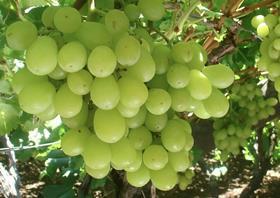
Namibian table grape growers have accepted that the new season will not fulfil all the expectations of significant further growth.
Total exports are likely to be down by about 0.5m cartons due to unfavourable conditions in the early development of the grapes.
The crop is now forecast at around 6.5m cartons instead of the early prediction of 7.2m cartons. Cold weather in the early development stage affected the crop, say industry sources.
Leon de Kock of Grape Alliance says his group is still pleased with what has been achieved. “With volume slightly down, we are still happy with the turnout. We are now moving into the late season and most of us will finish packing before Christmas despite a late start to the season.”
Andre Vermaak, a well-known table grape industry figure in Namibia, says growers who started pruning a bit later missed the effect of the cold weather and they are doing much better than the early growers.
The Namibian table grape industry, which has often been described as the stepchild of the Southern African table grape export business, is slowly marching towards a major milestone.
This year the Namibian industry, concentrated on the northern bank of the Orange River, was projecting an export volume of 7.2m cartons. The latest crop forecast is considered just a blimp in future growth.
The industry is set to export 10m cartons in two years’ time and it is clearly now becoming a very important player in the early Southern African season.
The total Namibian export volume of under 7m cartons is still however well short of the South African early season volume of around 28m to 30m cartons expected to be packed in the northern regions, the Orange River and the West Coast regions.
This year though both those on the northern side of the Orange River and their South African counterparts who grow their grapes along a distance of 250km on the southern side of the river, experienced late starts to their seasons.
“Markets are fairly full everywhere and it did not really matter so much that we are late,” says de Kock. “If you start late you never catch up, the sales windows during the early weeks have been missed.'
He says more grapes which would at this time of the year have been exported from South America to the US, are now arriving in Europe. This is due to the overhang of the Californian season and full markets in the US.
It was reported earlier that the sales of Californian grapes in China are affected by the fall-out of the Trump trade wars and that local US growers were carrying much larger stocks in their cold stores at the end of the Californian season.



